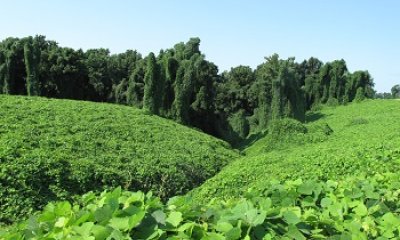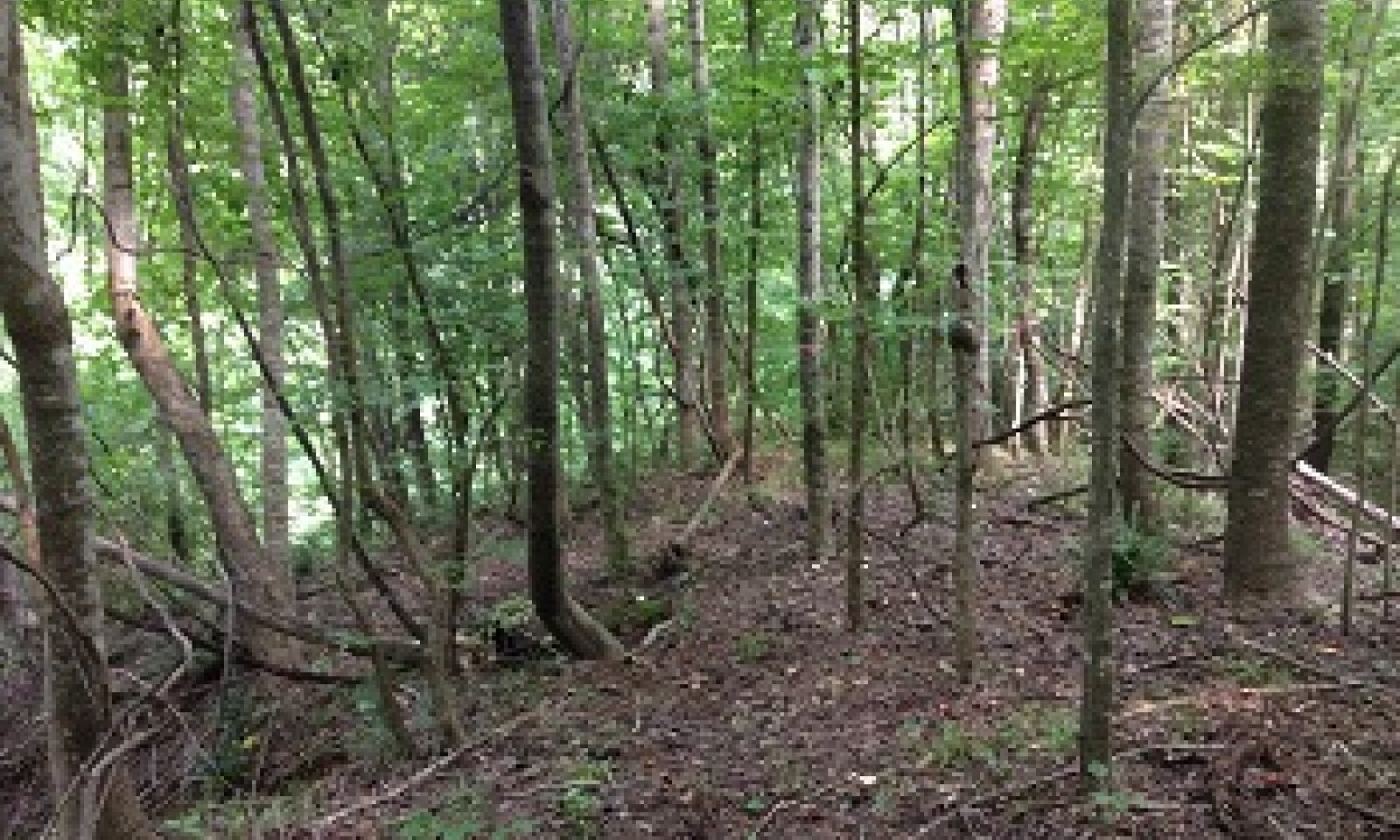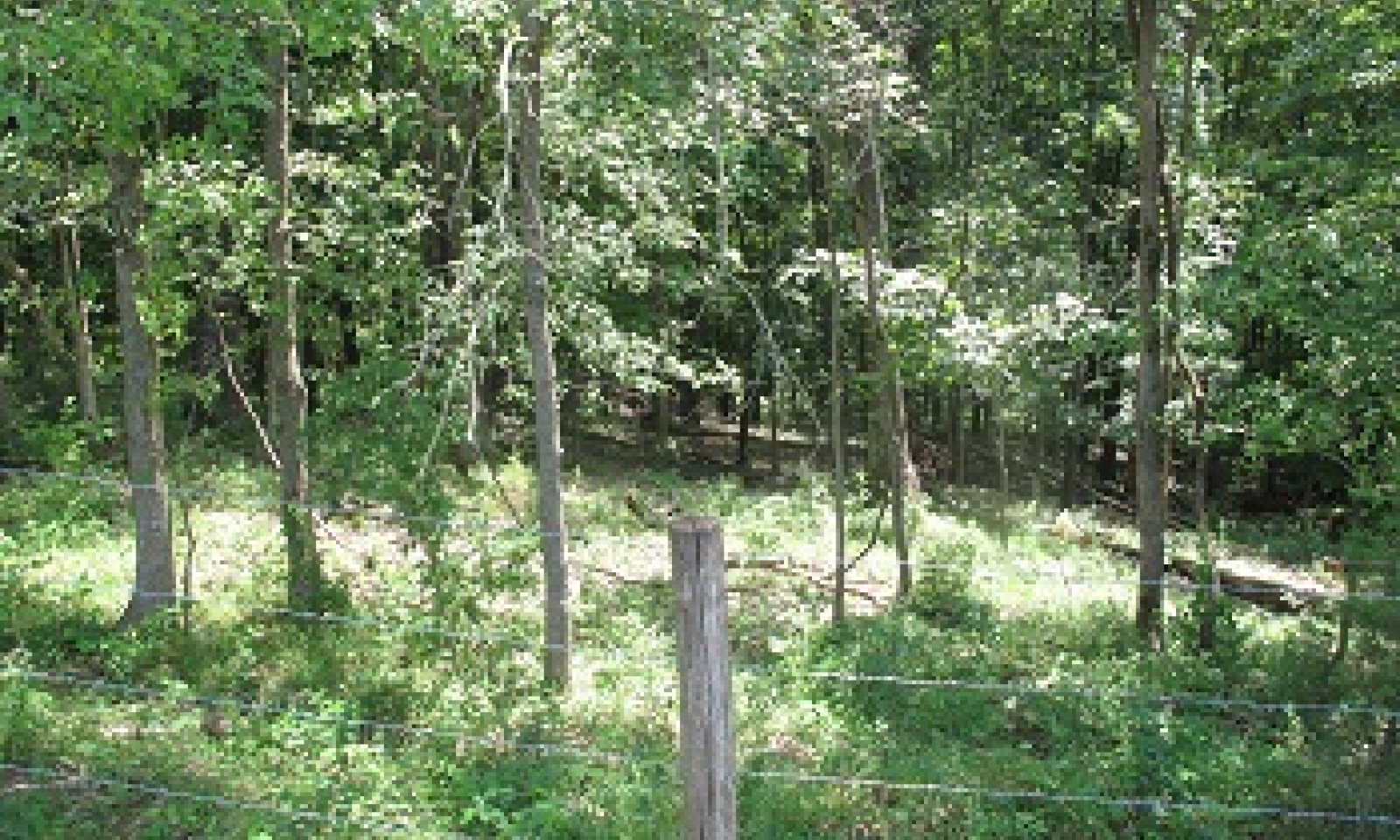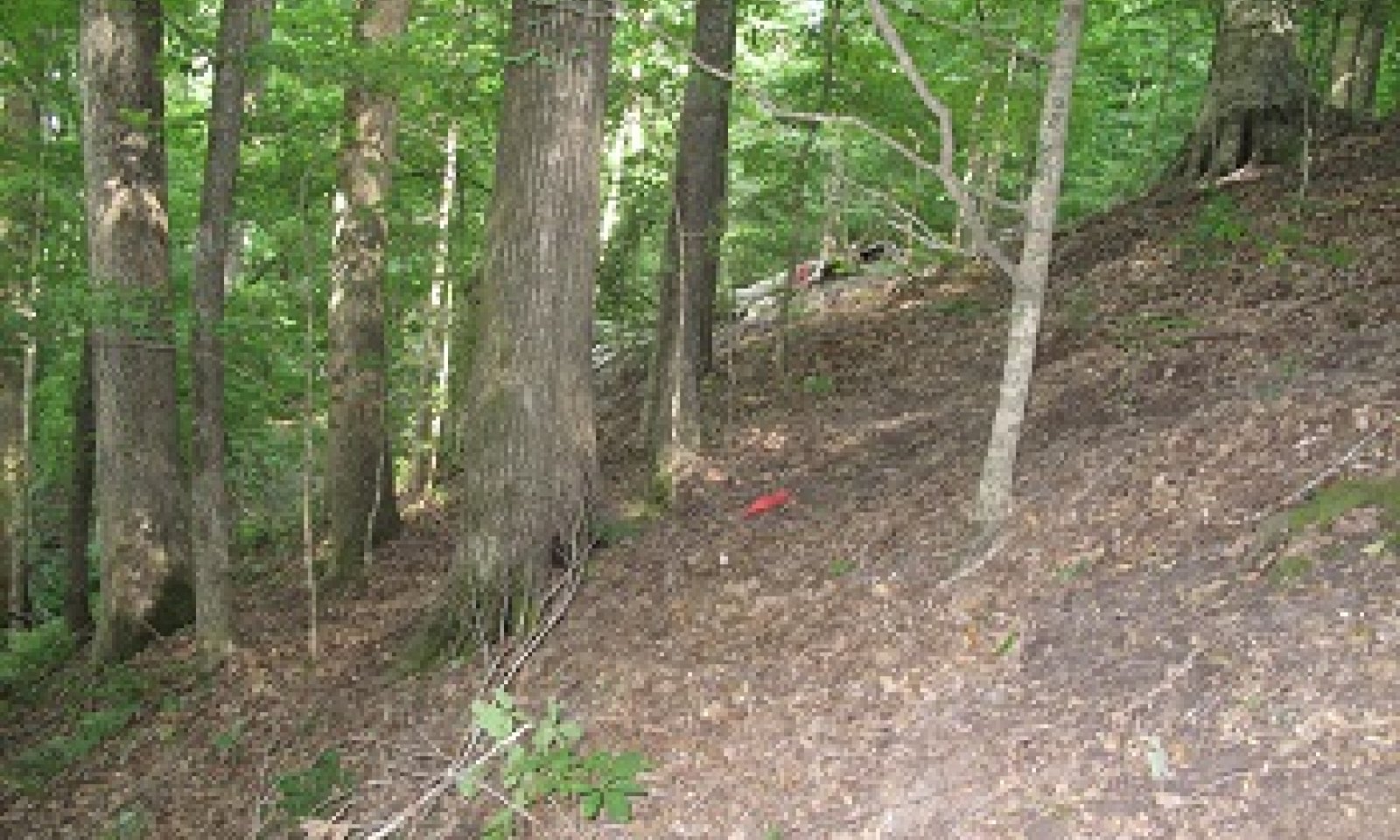
Northern Deep Loess Backslope Mesophytic Forest
List model
Scenario model
Current ecosystem state
Select a state
Management practices/drivers
Select a transition or restoration pathway
- Transition T1A More details
- Transition T1B More details
- Transition T1C More details
- Transition T1D More details
- Transition T1E More details
- Restoration pathway R2A More details
- Transition T2A More details
- Restoration pathway R3A More details
- Restoration pathway R4A More details
- Restoration pathway R4B More details
- Transition T5A More details
- Transition T5B More details
- Restoration pathway R6A More details
- Restoration pathway R6B More details
- Transition T6A More details
- Restoration pathway R7A More details
- Restoration pathway R8A More details
- Transition T8A More details
-
No transition or restoration pathway between the selected states has been described
Target ecosystem state
Select a state
State 1
Reference State: Mesophytic Forest


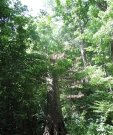
Description
The pre-settlement forest of this ecological site was largely removed more than 150 years ago (Hodges, 1995). Today, the forests of this site are of two general origins: 1) re-growths from abandoned agricultural lands, pastureland, and formerly cutover/cleared timberland; 2) forests that were never completely cleared but sustained several cuttings of varying intensity.
Locations that support “perceived” reference conditions consist of a few areas that have been spared from sustained manipulations for over 50 years. These “conditions” were generated from reviews of several published/unpublished surveys and field observations. Such locations are mainly on public lands (e.g., parks, natural areas, wildlife refuges, etc.), a few privately owned parcels, and an experimental research forest. Although these sites support very large trees, individual tree size is not necessarily an indicator of the reference state. Sites perceived to exhibit reference conditions generally support: 1) a composition consistent with the species reported in historic documents (e.g., state geologic surveys of the 1800s); 2) high species richness, especially in the canopy and subcanopy layers (i.e., no single species dominance); 3) several mesophytic species occuring in multiple height strata and/or life forms (not exclusive to beech and/or sugar maple); 4) well-developed, multi-layered forest; 5) vigorous trees and stands; 6) a low incidence of offsite vegetation (e.g., exotic species and/or native species indicative of other forest types); 7) low incidence of pioneer species that typically distinguish young, transitional forests (note that tuliptree, sweetgum, and other shade-intolerant species typical of older stands, > 75 years, are exceptions).
Two community phases are recognized as comprising the reference state. These differing phases are distinguished by the degree of successional stage (development); level or intensity of disturbance; and relative proportion of shade-tolerant vs. shade-intolerant species present in local stands.
Submodel
Description
This state is characterized by the regeneration or regrowth of a pre-existing forest stand following a major, stand-replacing disturbance. Scale of the disturbance is at the stand level and is greater than one acre in size (Johnson et al., 2009). Potential types of disturbances include catastrophic windstorms, wildfire, landslides, silvicultural clearcuts, and particularly destructive ice storms. The resulting, even-aged stand (or single-cohort) is set on a new course of development, which is highly dependent upon several critical factors including: the composition and structure of the stand prior to the disturbance; the degree or intensity of the disturbance; size and configuration of the disturbed area; and distance to seed sources.
Composition and condition of the forest stand prior to a major disturbance may dictate, in large part, future composition of the regenerating stand. Although colonization by new species is expected soon after the disturbance, many of the pre-existing overstory components are anticipated to occupy position in the new, developing stand – their presence arising mainly from stump or root sprouts, advance regeneration, and germination from the seed bank (Oliver and Larson, 1990). This generality may fail depending upon the intensity of the disturbance and understory structure of the pre-existing stand. Of particular concern, oak regeneration, even in formerly oak-dominated stands, is particularly problematic on this site and may require additional measures before oak dominance is expressed in the new stand (see Beck and Hooper, 1985; Goelz and Meadows, 1995; Lockhart et al., 2010).
If the intensity of the disturbance only removed the overstory and damage to the understory strata was light, then understory components of advance regeneration may proliferate in the new opening. This may be a desired condition if managing for an oak shelterwood harvest and subsequent oak recruitment. However, this scenario is particularly problematic in high-graded stands where repeated select cuttings ultimately favored dense concentrations and advancement of hophornbeam, American hornbeam, beech, and sugar maple throughout the understory. Overstory removal would ultimately favor proliferation of the preceding species, further complicating and impeding regeneration of a more diverse stand.
Submodel
Description
Forests in this state have undergone repeated select harvests over time. Actions leading to this condition consist of removing the biggest and best trees of the most desirable species and leaving low-quality trees (damaged and deformed) and undesirable species. This action, conducted repeatedly, can cause tremendous shifts in species composition and can decrease the vigor and health of the residual stand. Without implementing carefully prescribed management actions, species composition of extreme high-graded stands may remain in a highly altered condition for many decades, even after large, stand-replacing disturbances resets “successional opportunity.”
Today, this vegetation state probably represents the conditions of many forest stands throughout the distribution of this site. Local stands in which desirable species such as oaks, tuliptree, walnut, sweetgum, cucumber tree, basswood, etc. were repeatedly targeted often results in sites with proportionally more hickory, maple, and beech. Stands where hickory was also targeted often support beech, maple, and disproportionate numbers of other components such as boxelder, hackberry, and sugarberry.
Submodel
Description
Two timber managed phases are included to represent the range of management options and associated outcomes, given their importance and interest by silviculturists, landowners, land managers, and industry. The level of management intensity and the density of oaks relative to other hardwoods distinguish them. The first phase is an oak-centric management approach that promotes oak regeneration and production. Currently, the distribution of an oak-managed system is probably very rare and restricted due to the level of management commitment required for its development, maintenance, and perpetuation. The second phase represents a natural transition from an oak-managed system once specific management actions are relaxed. Incidentally, this phase also represents stands where even-aged methods (e.g., clearcut) and larger group selection harvests are conducted without oak-specific management actions (e.g., TSI, competitor control, oak-shelterwood approach, etc.).
Submodel
Description
This state is representative of hillslopes that have been converted to and maintained in pasture and forage cropland, typically a grass – legume mixture. The steep slopes and erosive soils of this site emphasize the need for diligent and well-planned pasture management. For pastureland, planning or prescribing the intensity, frequency, timing, and duration of grazing can help maintain desirable forage mixtures at sufficient density and vigor (USDA, NRCS, 2010; Green et al., 2006). Overgrazed pastures can lead to soil compaction and numerous bare spots, which may then become focal points of accelerated erosion and colonization sites of undesirable plants or weeds.
Establishing an effective pasture management program can help minimize the rate of weed establishment and assist in maintaining vigorous growth of desired forage. An effective pasture management program includes: selecting well-adapted grass and/or legume species that will grow and establish rapidly; maintaining proper soil pH and fertility levels; using controlled grazing practices; mowing at proper timing and stage of maturity; allowing new seedings to become well established before use; and renovating pastures when needed (Rhodes et al., 2005; Green et al., 2006). It is strongly advised that consultation with State Grazing Land Specialists and District Conservationists at local NRCS Service Centers be sought when assistance is needed in developing management recommendations or prescribed grazing practices.
Three community phases of this state are currently recognized. They differ in the level of grazing pressure and progression of natural succession should active management and/or grazing cease.
Submodel
Description
This state represents a return to forest conditions following the abandonment of pastureland and grassland management. The developmental stage of this state follows the “old field” condition and begins at canopy closure of the new forest stand. This initiates the stem exclusion period whereby establishment of additional canopy species becomes exceedingly difficult without active management (Oliver and Larson, 1990).
Composition of the resulting forest will vary considerably depending on the amount of time the site was previously managed; the intensity of former land use practices; the condition of the land prior to abandonment; and the source and distance of the nearest seed sources. Some pioneer species of the new stand may dominate early on but will be replaced by competitors within the community as the stand matures. Competitive interactions are intense at this stage.
Submodel
Description
This state represents the proliferation and dominance by a single species: kudzu. Several exotic species are now commonplace and problematic throughout the distribution of this site, but none compare with kudzu in its ability to displace and impede colonization by other species. When established, this rapidly growing legume effectively forms a single-species state by growing over, covering, and eventually replacing all other forms of vegetation. When allowed to grow into surrounding forests, it can significantly alter the composition and structure of the invaded stand by overshading the canopy and understory components and preventing regeneration of forest species (Forest Invasive Plants Resource Center, Online).
Submodel
Description
This state represents uncontrolled access by livestock onto the forested slopes of this ecological site. It does not take into account carefully prescribed and/or managed forms of forest grazing (e.g., agroforestry or silvopasture), which generally has a mutual goal of providing quality forage and productive forest management. The conditions considered and represented here are the extreme cases of long-term forest grazing; this form of uncontrolled access has been referred to as “turning livestock into the woods” (Brantly, 2014).
Forest stands that sustain heavy and frequent livestock traffic often have an open understory consisting of few herbaceous plants; low numbers of woody seedlings and shrubs; damaged tree roots; compacted soils; and varying levels of soil erosion. Composition of heavily grazed stands varies depending on the length of time grazing has occurred within the stand, the type(s) of livestock having access (hence, different grazing strategies), former forestry or logging practices, and conditions or composition of the forest prior to grazing. A single community phase is selected to represent the breadth of conditions that may be anticipated in stands having uncontrolled access by livestock.
Submodel
Transition T1A

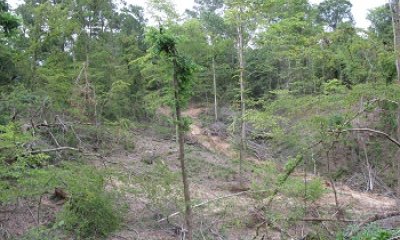
Mechanism
This pathway represents a large-scale, stand replacing disturbance, which may be caused by a catastrophic windstorm (e.g., straight-line winds, tornado), ice storm, severe fire, landslide, or a silvicultural clearcut. For this stressor to occur, most or all of the overstory must be removed or destroyed. A few residual trees may persist, but overall, the disturbance must be intensive enough, at least one acre or larger (Johnson et al., 2009), that a new, even-aged stand is created.
Mechanism
Repeated selective harvesting or high-grading of stands over time can cause shifts in species composition, structure, and overall health of affected stands. High-grading occurs when the most desirable trees of select species are repeatedly removed leaving behind inferior, low quality stems and undesirable species.
Mechanism
This pathway consists of prescribed silvicultural activities specifically designed to meet stand compositional and production objectives. For increasing oak recruitment and production (transitioning to Phase 4.1), achieving a level of oak advance regeneration in the stand is a necessity. Activities may include release cuttings through a combination of low and high thinning, mechanical and chemical control of competition, and artificial regeneration (i.e., planting) of sites with low oak presence. For management of a mixed hardwood system (less intensive approach), this pathway represents a variety of uneven-aged silvicultural methods, which may include group selection and/or single tree selection harvests (all classes/condition; avoid “high-grading”). Of caution, uneven-aged methods on this productive site will likely favor Phase 4.2, which may result in disproportionately more shade-intolerant mesophytes (group selection) or shade-tolerant overstory and understory components (single tree selection).
Mechanism
Actions required to convert forests to pasture or forage production include forest clearing, stump removal, herbicide application, seedbed preparation, and the establishment of desired plants. Decisions to convert forestland to pastureland on this site should be made carefully with erosion controls planned and deployed before, during, and after conversion activities. This site is extremely susceptible to erosion. The decision to proceed with this action should be done so in close communication with and guidance from local NRCS Service Centers.
Mechanism
This pathway represents uncontrolled access by livestock and impacts from sustained, selective grazing and browsing. Impacts from continual grazing and uncontrolled access can result in the removal of palatable understory components, alteration of species composition in current and future stands, conditions for exotic plant invasions, and soil compaction and erosion.
Restoration pathway R2A


Mechanism
This pathway represents a return to reference conditions through natural succession, if the disturbance occurred within a reference community. Depending upon objectives and stand condition, management activities to aide recovery may include exotic species control and silvicultural treatment that benefits oak regeneration and establishment (e.g., TSI practices such as crop tree release, low thinning, and cull removal). Restoring a highly altered stand (e.g., high-graded or heavily grazed) to reference conditions will require intensive management including mechanical and chemical treatment of undesirables, multiple follow-up TSI practices, and establishment of missing components (i.e., planting).
Mechanism
This pathway represents the development of an even-aged stand that is prescribed to meet compositional and production objectives. For oak production (Phase 4.1), actions may include a final shelterwood harvest or crop tree harvest; artificial regeneration may be required for increasing oak abundance. Additional actions will likely include mechanical removal and herbicide treatment of oak competition. Development of a stand following a silvicultural clearcut, with no additional management actions, will favor expansion of mixed hardwoods (Phase 4.2). The latter will most likely result in disproportionately more non-oak hardwoods; oak response could be very poor depending on local site conditions.
Restoration pathway R3A
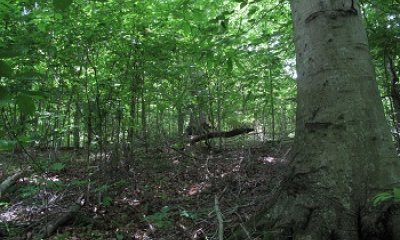

Mechanism
This pathway represents a large-scale, stand-initiating disturbance, which effectively removes most or all of the pre-existing overstory. Disturbances may include catastrophic windstorms, severe wildfire, silvicultural clearcut, and slope failure or landslide. For restoration of a severely high-graded stand to be effective, the intensity of the disturbance must be great enough to also damage or destroy most, if not all, of the pre-existing understory. Disturbances that only remove the overstory and not the shade-tolerant understory may promote an unintentional explosion of growth by the latter, further inhibiting reproduction of more desirable shade-intolerant and moderately-tolerant species. Desirable species that were depleted from high-graded stands may need to be planted if natural seeding and reproduction are no longer possible.
Restoration pathway R4A


Mechanism
Natural succession over a period of time may transition a former timber-managed stand to one supporting reference conditions. Based on observations of some reference stands, a period greater than 50 years may be required. Some question remains whether a return to reference conditions will occur in every situation, especially since some components may have been selectively culled from the stand. This scenario most likely applies to the rarer components of the community (e.g., Kentucky yellowwood). Overall, resiliency of the community appears to be quite high given the amount of impacts the site has sustained over the past 200 years.
Restoration pathway R4B


Mechanism
This pathway represents a large-scale, stand-initiating disturbance, which effectively removes most or all of the pre-existing overstory. Disturbances may include a catastrophic windstorm, severe wildfire, slope failure or landslide, and silvicultural management (even-aged). If the disturbance is a prescribed management action, method of harvest will depend upon current timber objectives and future stand composition and production goals. For continued oak management (Phase 4.1), silvicultural actions may include shelterwood or crop tree harvest in addition to competition control (mechanical and herbicide). For mixed hardwood management, silvicultural action may simply be a clearcut.
Mechanism
This pathway involves abandonment of grassland/pastureland management and allowing natural succession to proceed beyond the old field stage to canopy closure of the young, developing forest stand.
Mechanism
This transition represents proliferation and dominance of an invasive species, kudzu. Most situations where this transition has occurred are on gullied and severely eroded land – the effects of which occurred long ago when early attempts at farming and pasturing on steep slopes led to rapid gullying and in some cases, mass wastage. Kudzu was established in an attempt to control erosion. This transitional pathway is actively occurring as kudzu patches continue to expand over both open areas and along the margins of adjoining forests.
Restoration pathway R6A
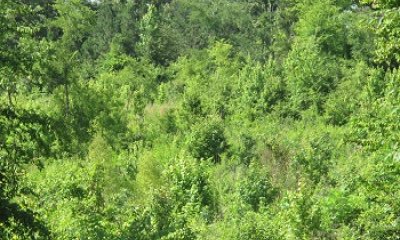

Mechanism
This pathway represents natural succession back to perceived reference conditions. The period required for this transition to take place likely varies by location and is dependent upon local site conditions. Ages extrapolated from reference stands on a few protected sites (e.g., parks, refuges, etc.) suggest that a return interval to reference conditions may require more than 50 years; some of the examined stands have been protected for at least 75 years. In some cases, a return to the reference state may not be possible without considerable management effort. That effort may involve exotic species control and the reestablishment of components considered characteristic of the reference state. If planting is deemed necessary, local conditions of the transitional forest must be assessed and informed decisions made on which species to plant and where specific tree species should be planted in relation to the slope profile or position.
Restoration pathway R6B

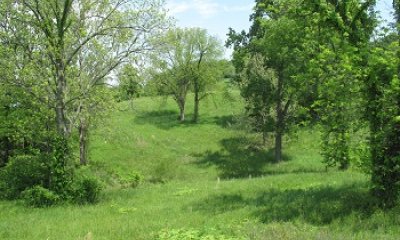
Mechanism
Actions required to convert forests to pasture or forage production include forest clearing, herbicide application, seedbed preparation, and the establishment of desired plants. Decisions to convert forestland to pastureland on this site should be made carefully with erosion controls planned and deployed before, during, and after conversion activities. This site is extremely susceptible to severe erosion and soil loss. The decision to proceed with this action should be done so in close communication with and guidance from local NRCS Service Centers.
Mechanism
This pathway represents uncontrolled access by livestock and subsequent grazing and browsing. Selective foraging of palatable species can result in the reduction and loss of certain community associates and create shifts in species composition of affected stands. Some grazed forests today likely developed through this pathway as early cropland pursuits were abandoned and livestock were allowed to graze through reverting stands.
Mechanism
The establishment of, or a return to, pastureland or open grassland conditions following a previous kudzu infestation may be possible in some areas. Successful actions will require relentless efforts that include one or more of the following methods: mowing, prescribed grazing (cattle and goats), prescribed burning, digging, disking, and intensive herbicide application. Because many areas covered in kudzu are gullied chasms with vertical sidewalls, mechanical smoothing of these land irregularities will be necessary before planting in preferred seed mixtures and restoration to take place. In some extreme cases, restoration attempts could result in greater erosion and worsening of local conditions. Please consult with District and Soil Conservationists at local NRCS Field Offices for advice and guidance on land smoothing and/or restoration attempts on severely eroded/gullied areas.
Mechanism
Large-scale, stand-initiating disturbances effectively remove the pre-existing overstory and resets site conditions to an early seral stage. Disturbances may include catastrophic windstorms, icestorms, silvicultural clearcut, and slope failure or landslide. Depending on the level of former livestock impacts, there may be very little advance regeneration available for rapid forest development. Pioneers may consist of hardy species capable of establishment on compacted soils, which often includes exotic species. Actions may require control of undesirable species and planting desirable forest species. Natural succession and site-based forest management over time may result in a diverse mix of overstory and understory species.
Mechanism
Actions required to convert forests to pasture or forage production include forest clearing, herbicide application, seedbed preparation, and the establishment of desired plants. Decisions to convert forestland to pastureland on this site should be made carefully with erosion controls planned and deployed before, during, and after conversion activities. This site is extremely susceptible to severe erosion and soil loss. The decision to proceed with this action should be done so in close communication with and guidance from local NRCS Service Centers.
Model keys
Briefcase
Add ecological sites and Major Land Resource Areas to your briefcase by clicking on the briefcase (![]() ) icon wherever it occurs. Drag and drop items to reorder. Cookies are used to store briefcase items between browsing sessions. Because of this, the number of items that can be added to your briefcase is limited, and briefcase items added on one device and browser cannot be accessed from another device or browser. Users who do not wish to place cookies on their devices should not use the briefcase tool. Briefcase cookies serve no other purpose than described here and are deleted whenever browsing history is cleared.
) icon wherever it occurs. Drag and drop items to reorder. Cookies are used to store briefcase items between browsing sessions. Because of this, the number of items that can be added to your briefcase is limited, and briefcase items added on one device and browser cannot be accessed from another device or browser. Users who do not wish to place cookies on their devices should not use the briefcase tool. Briefcase cookies serve no other purpose than described here and are deleted whenever browsing history is cleared.
Ecological sites
Major Land Resource Areas
The Ecosystem Dynamics Interpretive Tool is an information system framework developed by the USDA-ARS Jornada Experimental Range, USDA Natural Resources Conservation Service, and New Mexico State University.
